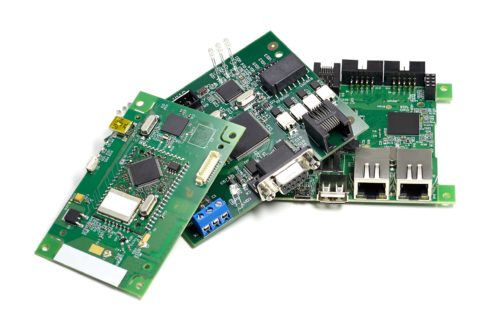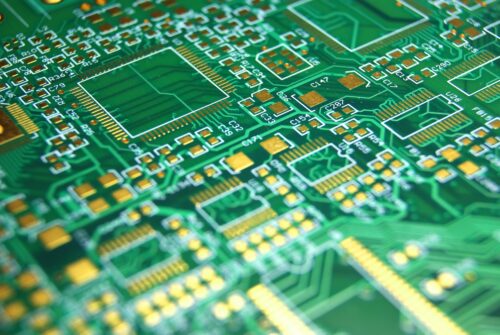Types of PCBs
Printed circuit boards (PCBs) interconnect electrical components on a self-contained board. These boards are essential to the function of most electronics, and as such may be found in a countless devices. Manufacturing specifications and materials for PCBs will differ based on the application requirements. The insulating surface of the board or substrate can receive a deposit of conductive material to create circuits, and a range of components can interconnect through the circuitry by soldering them to the board substrate.
To help you determine the ideal board for your application, the team at CCK Automations has compiled the following list of the various types of PCBs we offer and their applications.
Single-Layer PCB
Single layer PCBs have only one layer of substrate or base material. The substrate is non-conductive but uses circuits on one side made from copper or another conductive material. As the simplest board in terms of design and manufacturing, single-layer PCBs are inexpensive but also less desirable due to their limited design capabilities. When products require more complexity, a double-layer PCB may be ideal.
Double-Layer PCB
Double-layer PCBs have a conductive layer on each side of the non-conductive substrate. Gold-plated holes or pads can connect components to each side of the board. Surface-mount technology or through-hole technology are the two primary methods for connecting components to the boards.
- Surface-mounting connects the components to the board by soldering small leads to the board substrate. This method can facilitate a wide variety of functions.
- Through-hole technology uses small wires fed through holes in the board substrate. Soldered wires connect the board and the component.
Multi-Layer PCB

Devices and equipment that require more than two layers require multi-layer PCBs. Each layer is sandwiched between a top and bottom substrate to create thick, compounded board designs. Multi-layer PCBs accommodate a high level of board complexity. When a board requires a substrate with sturdy construction, a rigid PCB improves on more than just complexity.
Rigid PCB
Rigid PCBs have a solid substrate made with a rigid material, such as fiberglass, that keeps the board from twisting. Each layer joins with heat and adhesive. A variety of industrial control mechanisms and consumer electronics rely on rigid PCBs as durable and long-lasting solutions.
Flex PCB
When electronic devices require more flexibility to conform to space requirements, a flex PCB is often advantageous. Flex PCBs are so named for the flexible substrate that allows them to bend and conform to various shapes. These boards also allow a range of shifting and turning during use and can be built in a single-sided, double-sided, or multi-layer format. Flex PCBs are the preferred board technology for aerospace, military, medical, automotive, transportation, consumer electronics, communications, and industrial electronics.
Rigid-Flex PCB
Rigid-flex PCBs share many of the advantages of flex PCBs and rigid PCBs, combining the primary benefits of both. Rigid-flex boards use the rigid substrate of rigid boards, but flex at joints to help them conform to specific space requirements. This type of board minimizes or eliminates connectors to reduce reliability issues while increasing labor and yield transmission.
High-Density Interconnect (HDI) PCB
HDI PCBs push the limits of size and performance through high-precision manufacturing technology. Manufacturers employ advanced lamination processes, laser-drilled microvias, multiple layers of conductivity, and delicate tolerances and lines to deliver compact performance. HDI PCBs provide an ideal solution for small components in cutting-edge devices and designs with complex routing.
High-Frequency PCB
High-frequency PCBs are frequently used in technology that relies on frequencies or special signal transmissions above one gigahertz. Using materials with advanced laminations and impedance controls can further enhance high-frequency PCBs to improve their performance in demanding applications.
PCB Assemblies From CCK Automations
Printed circuit boards come in a wide range of types to meet the demands of various applications. Each board type has advantages and disadvantages, from the inexpensive single layer PCB to the complex HDI PCB. The specialists at CCK Automations can assist you in selecting the ideal board type for your application.
Our capabilities include designing simple and complex boards of every type to fit your exact specifications. Our in-house PCB manufacturing capabilities include full design and assembly. We do not manufacture bare PCBs. When you rely on our in-house manufacturing, you will benefit from quick turnaround times, low delivery costs, and the highest quality finished product.
Contact us for more information about our custom PCB solutions or request a quote today.
